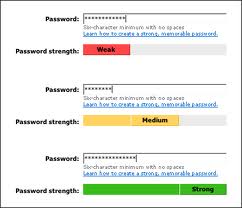Psst… What’s the P@$Sw0rd?
 With constant ongoing news about personal and professional accounts being compromised, I thought it would be important to write about what to do and what not to do when creating a password (and even if you already know this, just a quick reminder! Also, don’t forget to pass this information to your children!).
With constant ongoing news about personal and professional accounts being compromised, I thought it would be important to write about what to do and what not to do when creating a password (and even if you already know this, just a quick reminder! Also, don’t forget to pass this information to your children!).
Think you have a strong password? You may be a pro at creating passwords but just in case, here are some tips to consider:
Avoid!
- Using personal information (i.e. phone number, birth date, age, your name, pet’s name, etc.).
- Using a word that exists in the dictionary and common phrases.
- Common substitutions (e.g. “&” for “and”, “2” for the word “to”, “3” for the letter “E”).
- Writing down your password.
- Using a “save password” or “stay logged in” feature when logging into an account.
How are accounts compromised?
- Passwords that are weak can be guessed.
- Thieves use programs to figure out passwords.
- Shared computers leave an account vulnerable.
We suggest:
- Make your password at least eight or more characters long (the longer the password, the more difficult to crack).
- Find ways of randomizing numbers, letters, or symbols and make it memorable to you.
- Use a combination of lower and upper case letters.
- Update passwords regularly.
- Log out of accounts when you are done.
Are you ready to test your password making skills? You can check to see if a password is strong by testing it with Microsoft’s Password Checker. Just to be safe, don’t use an existing password or one that you plan on using.
Isaac Wong
Project Manager
SUBSCRIBE TO OUR BLOG
Get a weekly roundup from the world of ModSquad.
SUBSCRIBE TO OUR BLOG
Get a weekly roundup from the world of ModSquad.